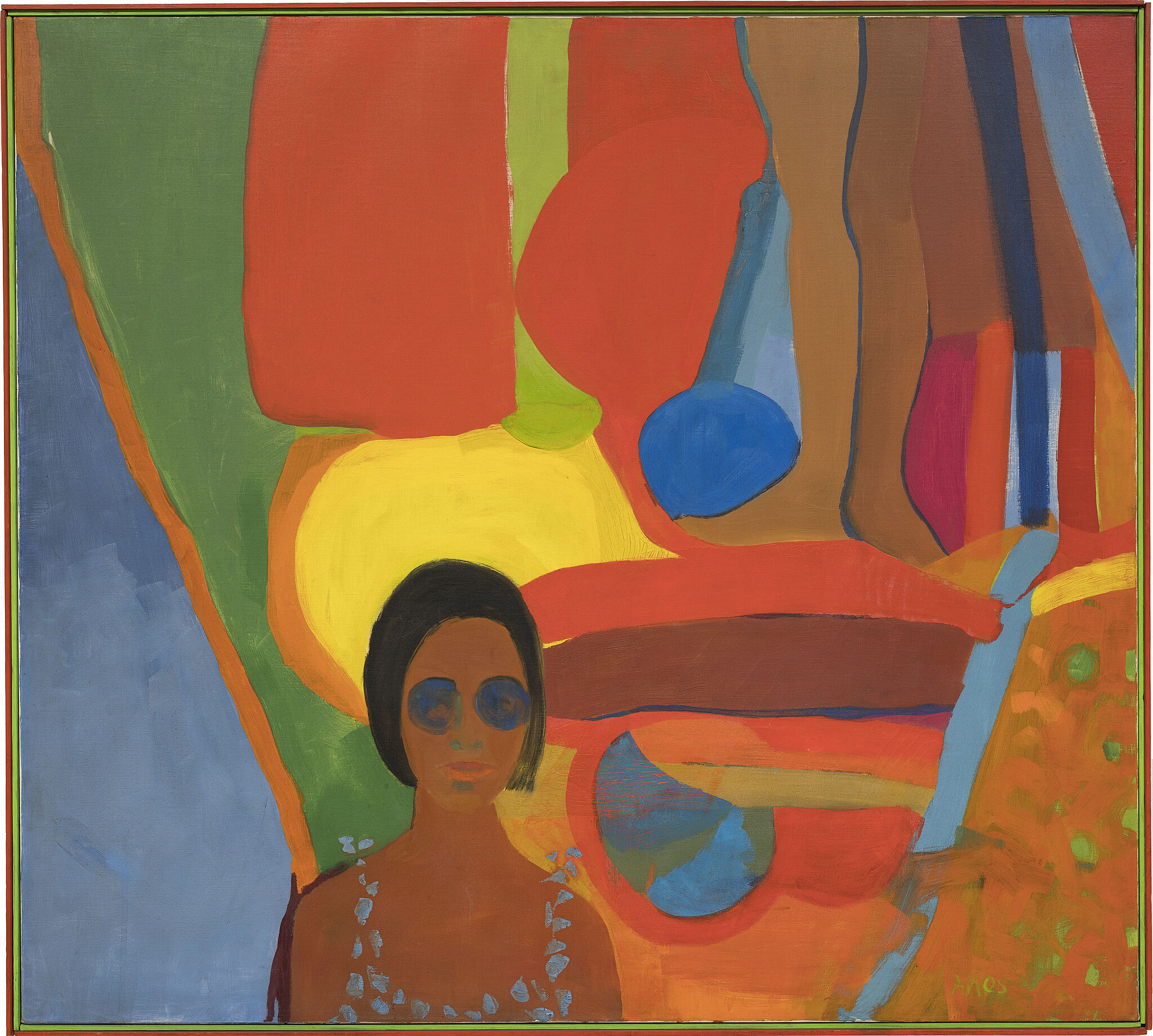Spilling Over: Painting Color in the 1960s | Art & Artists
Mar 29–Aug 18, 2019
Spilling Over: Painting Color in the 1960s | Art & Artists
Emma Amos
2
In the early 1960s, Emma Amos began to create imagery that shifted fluidly between abstraction and representation. She was the youngest and only female member of Spiral—a New York–based collective founded by Charles Alston, Romare Bearden, Norman Lewis, and Hale Woodruff in 1963 to consider art’s relationship to civil rights. Amos resisted the idea of a singular Black aesthetic, which put her at odds with artists who insisted on direct, often figurative, depictions to address racial politics. As she later stated: “Every time I think about color it’s a political statement.”

